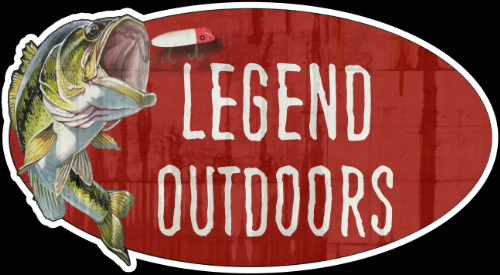How many times have you pulled to your favorite lake and realized you have a good distance to drag your shanty across the concrete or stone surface? You know what that can do to the bottom of your sled and there is a good solution to resolve that out there.
In my case I am running the Clam Kenai one man shanty and I recently decided to add the runner kit to the bottom of the unit.

Upon opening the box I found that the instructions were included, however they were very limited. Because of this I wanted to take the time to discuss the installation of the units on the sleds so as to help others out in the event they choose to add the runner kits.
In my case the runners are made for several models of sleds and they are a bit longer than required, however I chose to let them stay the length and run them a bit higher up on the sled. I felt that this would allow some extra protection when going over some of the rough terrain that I tend to encounter as well as to assit in some of the deeper snow banks.
Upon opening the box the runners are deigned in a U type shape. This design allows the large flat part of the runner to lay flat on the bottom of the sled. This allows the two smaller arms to make contact with the ice or snow, thus reducing the amount of surface area that is in contact with the ground. This also creates a pocket in which the screw head is allowed to be recessed into so that it is not in the path of the runner.
The placement of the runners is pretty obvious, but just to be clear you want to make sure they are placed on the highest portion of the bottom of the sled. Do not put them on the recessed portion as they will be ineffective.
When starting out lay the runners on the bottom of your sled and allow them to touch the rear of the sled at the point that the sled begins to curve upwards. This will give you a proper starting point for your length. However, you do not want to put your first screw here. You will want to begin at the front of the sled where the runner makes the bend and is attached at the front.

Using a 3/16″ drill put a hole near the end of the runner and directly in the center. Run the drill through both the runner and the sled.

This will be your first screw starting point. Run the size 10 screw through the hole and attached the other side using the supplied flat washer and nut. I chose to use a 3/8″ nut driver and a power drilll to tighten the screw and the nut initially and then finish off with a hand screwdriver and the nut driver to make sure things were properly snug.
When this first screw is tight slowly bend the runner around the radius of the front of the sled making sure the runner follows the contour. If you have issues use a heat gun or hair dryer to apply a little heat to help soften the plastic a bit.
When you have it bent and in proper position put another hole into the rail and through the sled. Fasten this area with another screw, washer and nut and tighten up.

You now have the runner in place and you can properly space your last three screws into the runner and drill the holes.

I found that it was easiest to place the screws through the holes and come back later when all was attached and place the washer and the nut onto the screws when I could flip the sled and reach the underside much better.
When all the rails were mounted and the screws placed into the newly drilled holes all that was left was to go through and tighten up the nuts on each of the runners.

With all the runners in place and all the screws were tightened up the rails were complete.

When I flipped the sled over I found that the screws were a bit long for my liking. I could easily see catching my clothing on a screw or having issues with storing gear. In order to resolve this I used a good sharp blade on my reciprocating saw and slowly cut off each protruding stud at the top of each nut. This was done slowly and with caution as you do not want to saw though your sled or cause any unnecessary damage to the unit.

After all the studs were cut flush I came back through with my dremel tool and a small grinding wheel and smoothed off any rough edges that were left during the cutting process. This left me with a smooth and snag-free nut.

The process was rather simple and the complete project took less than one hour. These runner kits are made for most models of the Clam outdoors line of sleds and I would highly recommend putting one on your sled to keep it lasting for years to come. The runners will take the brunt of the abuse and keep you from wearing holes into the bottom of your sled.
The price of the runner kits certainly outweigh the cost of replacing the sled itself. Good luck and good fishing!
Cory Yarmuth
www.legend-outdoors.com

